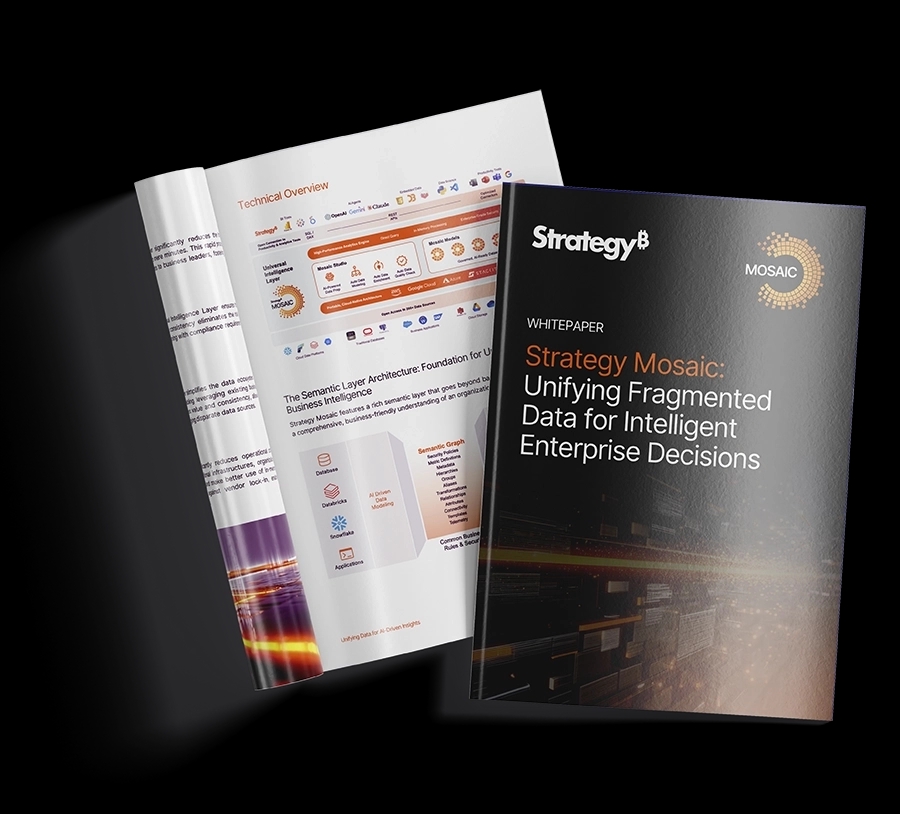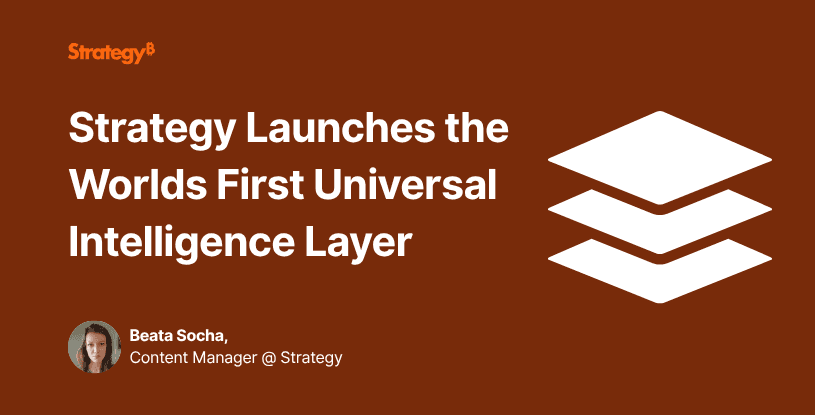The Problem with Traditional Reporting—and How It Holds You Back
In the modern, post-AI world, customer trends change in real time.
During the 2024 holiday season, AI-powered chatbots and recommendations drove $229 billion in global online sales. By 2028, 75% of new contact centers will integrate generative AI into voice and chat systems.
The result? Customers now have easier access to alternatives, and your business needs to make rapid decisions to keep pace with competition and demand. But here’s the thing: great decisions depend on great data.
Businesses search for any metric or insight that can put them ahead in the customer’s decision-making process. To do that, they need access to consistent, high-quality data.
Too often, organizations rely on legacy reporting tools—outdated platforms or manual spreadsheets that were never built for today’s velocity or complexity. And that’s a problem, especially as more companies look to consolidate BI efforts for speed and accuracy.
The Hidden Risks of Outdated Reporting Tools
Traditional reporting tools are like an 18th-century carriage: functional for short distances but requiring extensive prep, trial-and-error, and constant legwork.
In other words, they are at the heart of the BI consolidation challenge. Businesses want to move toward unified analytics and governed, real-time insights, but older reporting solutions just can’t keep up.
Consider this: A reporting process involves dozens of spreadsheets, hours of manual data cleaning, and thousands of data points to analyze—all under tight deadlines.
The result? Overworked analysts, human errors in reporting, and a slow turnaround that leads to missed opportunities.
As data volume and variety grow, traditional reporting tools expose more risk and inefficiency—a reality that often sabotages even the best BI initiatives. Even minor reporting errors can violate regulatory standards, putting your data governance structure at risk of penalties and public scrutiny.
The 4 Deeper Issues Keeping Reporting Teams Stuck
The risks of traditional reporting go far beyond data inaccuracies. Businesses needing governed, up-to-the-minute insights can’t rely on outdated reporting methods.
Lack of Cohesion and Clarity: KPIs, metrics, and key reporting terms often vary across departments. Traditional platforms fail to unify these definitions, creating blind spots, inconsistencies, and costly reporting errors.
Information Overload: Overstuffed reports—especially those combining inconsistent data from multiple sources—overwhelm users, from seasoned analysts to frontline workers.
Lack of Reliable Context: Without a single source of truth to unify data across systems, teams lack the context needed for accurate analysis. Critical information gets lost in translation, and valuable insights slip through the cracks.
Lack of Granularity: Teams need access to metrics tailored to their daily workflows, plus relevant cross-departmental data. Yet most traditional tools lack the personalization and drill-down features modern businesses require to surface relevant insights fast.
The answer seems obvious: replace outdated systems with a modern BI platform.
But in reality, most organizations face tough barriers.
The Challenges of Upgrading Your Reporting System
Years of historical data live in old systems. Data migration isn’t just a switch-flip—it’s an expensive, complex journey that can disrupt business if not handled carefully.
However, the cost of inaction is immense: Employees face unclear data, teams lose insights, and businesses struggle with slow response times.
Unfortunately, many small to medium-sized businesses lack the physical, digital, and financial infrastructure necessary to overhaul their reporting processes.
Yet despite these challenges, forward-thinking organizations continue to find creative ways to transform how they collect, analyze, and report data.
How do they unlock seamless integration across multiple data sources?
How do they access fast, governed, and tailored data insights?
That’s where the Universal Intelligence Layer comes in.
How the ‘Universal Intelligence Layer’ Powers Modern Reporting
In short, the Universal Intelligence Layer connects all business data into a single source of truth and acts as a “universal dictionary”—delivering a governed, consistent layer of metrics, definitions, and logic across systems.
Our universal intelligence layer, Strategy Mosaic, blends AI with advanced governance to make data the driving force behind every business decision.
Mosaic powers applications, reports, BI tools, and AI agents with consistent data and security, eliminating the need to build custom data warehouses or reengineer existing data stacks.
How Mosaic’s Universal Intelligence Layer Elevates Reporting
Mosaic transforms an average reporting process into an intelligent data hub.
A Single Source of Truth: Mosaic uses AI to streamline data collection and preparation into one seamless workflow. Enterprises gain a unified view of their data ecosystem while removing inconsistent definitions and fragmented governance.
AI-Powered Security: Mosaic centralizes data protection, combining AI-driven security features with role-based access controls. This ensures your data stays secure and helps your organization meet compliance requirements efficiently.
Granular Access and Customization: Mosaic’s role-based access allows teams to surface only the data that matters. Instead of scrolling through lengthy reports, they can filter, analyze, and act on relevant metrics in seconds.
Optimized Data Connectors: Mosaic provides specialized connectors for Tableau, Power BI, Excel, and Sheets, delivering contextually relevant data directly into the tools your teams use daily.
And here’s the best part: Mosaic reduces cloud query costs by cutting redundant data pipelines and maximizing your existing data investments.
The result? Less manual work for you—and faster, governed reporting for your organization.
Mosaic: The Future of AI-Powered Reporting
Just as an 18th-century carriage can’t compete with modern vehicles, traditional reporting can’t keep up with the demands of today’s businesses.
Inconsistent metrics, fragmented data, and unregulated workflows aren’t just roadblocks—they’re hazards that can derail your operations and decision-making.
Mosaic redefines reporting with AI—delivering clearer, consistent, and governed data across your organization. It powers accurate reporting at scale and ensures the right metrics reach the right teams at the right time.
Ready to transform your reporting?
Discover how Mosaic connects, cleanses, and prepares data for faster, more reliable reports.

Content:
- The Hidden Risks of Outdated Reporting Tools
- The 4 Deeper Issues Keeping Reporting Teams Stuck
- The Challenges of Upgrading Your Reporting System
- How the ‘Universal Intelligence Layer’ Powers Modern Reporting
- How Mosaic’s Universal Intelligence Layer Elevates Reporting
- Mosaic: The Future of AI-Powered Reporting
Related posts




